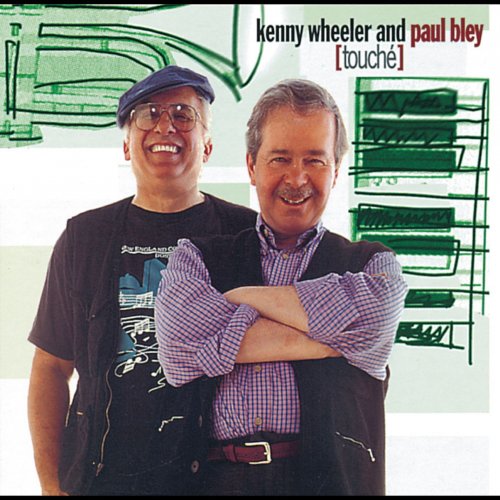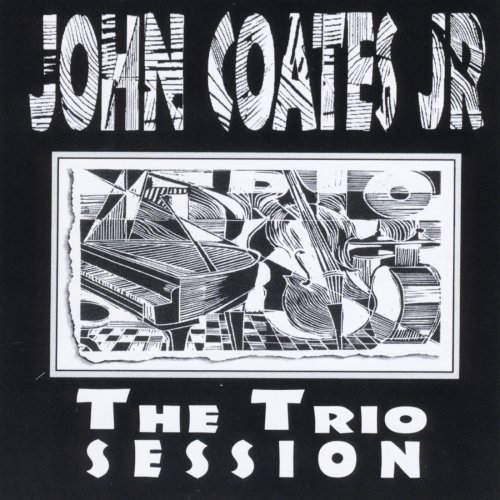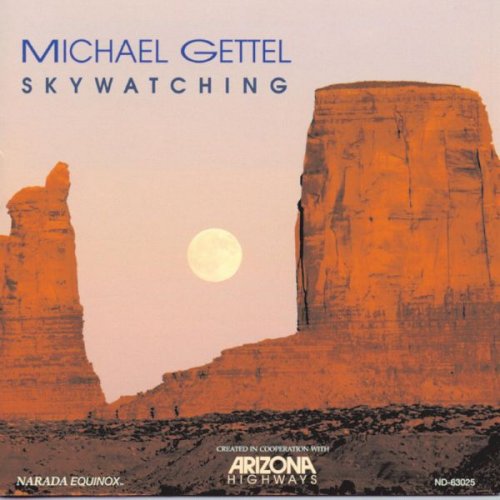Kenny Wheeler, Paul Bley - Touché (1996)

Artist: Kenny Wheeler, Paul Bley
Title: Touché
Year Of Release: 1996
Label: Justin Time
Genre: Jazz
Quality: FLAC (tracks) / MP3 320 Kbps
Total Time: 58:46
Total Size: 281 Mb / 149 Mb
WebSite: Album Preview
Tracklist: Title: Touché
Year Of Release: 1996
Label: Justin Time
Genre: Jazz
Quality: FLAC (tracks) / MP3 320 Kbps
Total Time: 58:46
Total Size: 281 Mb / 149 Mb
WebSite: Album Preview
1. Presto 4:40
2. Ouvre 3:11
3. Fausto 3:34
4. Doing Time 5:35
5. Mystique 3:59
6. Double Standard 3:57
7. Touché 3:50
8. Concours 1:59
9. Déjà Vu 4:38
10. Colour 2:56
11. Upscale 5:37
12. Prequel 6:44
13. Sortie 7:35
Personnel:
Piano – Paul Bley
Trumpet, Flugelhorn – Kenny Wheeler
When two musicians perform together-without a net, as it were-we hear their individual skills, but we hear them in the context of their understanding of one another. Particularly in free improvisation, in the absence of the listener’s traditional framework, the ear tends to hear the whole, not just the doughnut or the eclair. These two recordings are a gratifying lesson in the range of music embraced by free jazz, instructive both in their similarities and their differences.
It is tempting to try to generalize about these two duos in order to distinguish between them. Considering Douglas’ trumpet, paired with the neo-percussion (and harmonica and “french” violin [sic] and other stuff [sic rursus]!) of Han Bennink, one might say that the relationship is about time and texture-and perhaps tongue-in-cheek. But this leaves out too much-the elegant balance the two have crafted into each piece, whether freely improvised or based on a chestnut like “Too Close for Comfort” or “Cherokee.” Looking at Kenny Wheeler’s approach to collaborating with pianist Paul Bley, one might suggest timbre and space as being the primary concerns of the players-but what then of the elegance of line that marks the whole CD, or the way each refracts the other’s ideas in the moment? Is Douglas more “tonal” in his approach, as witness the walking sixths motif that drives his composition “Delft?” Well, not really, hearing the plangent, tonal lyricism of Wheeler’s “Doing Time.” Two CDs, very different, much in common: Wrap your ears around both.
It is tempting to try to generalize about these two duos in order to distinguish between them. Considering Douglas’ trumpet, paired with the neo-percussion (and harmonica and “french” violin [sic] and other stuff [sic rursus]!) of Han Bennink, one might say that the relationship is about time and texture-and perhaps tongue-in-cheek. But this leaves out too much-the elegant balance the two have crafted into each piece, whether freely improvised or based on a chestnut like “Too Close for Comfort” or “Cherokee.” Looking at Kenny Wheeler’s approach to collaborating with pianist Paul Bley, one might suggest timbre and space as being the primary concerns of the players-but what then of the elegance of line that marks the whole CD, or the way each refracts the other’s ideas in the moment? Is Douglas more “tonal” in his approach, as witness the walking sixths motif that drives his composition “Delft?” Well, not really, hearing the plangent, tonal lyricism of Wheeler’s “Doing Time.” Two CDs, very different, much in common: Wrap your ears around both.



![Chewing, Dave Harrington, Ryan Hahn, Spencer Zahn - Quintet (Live in Los Angeles) (2025) [Hi-Res] Chewing, Dave Harrington, Ryan Hahn, Spencer Zahn - Quintet (Live in Los Angeles) (2025) [Hi-Res]](https://img.israbox.com/img/2025-12/12/owakjkfg0whflv2rzyocno89p.jpg)




